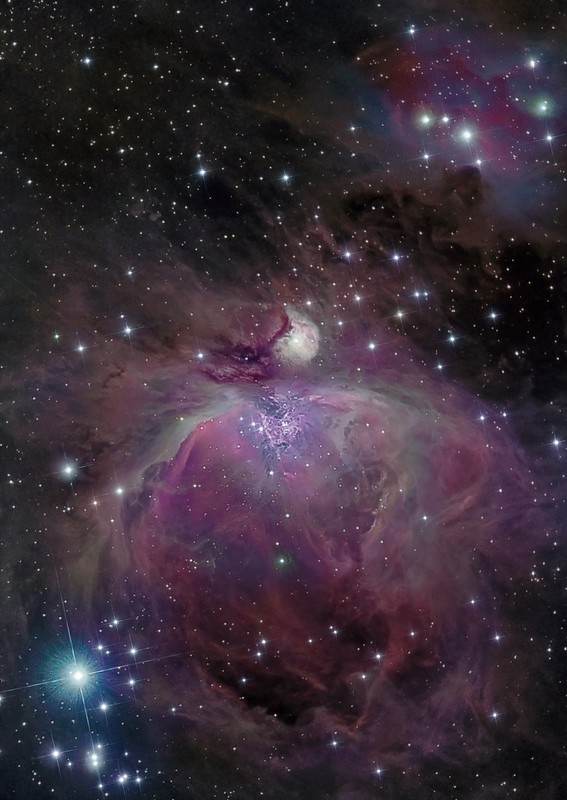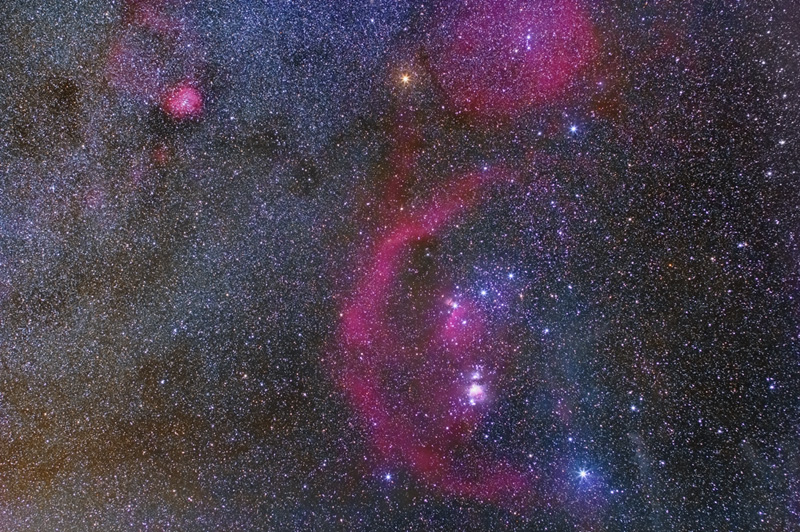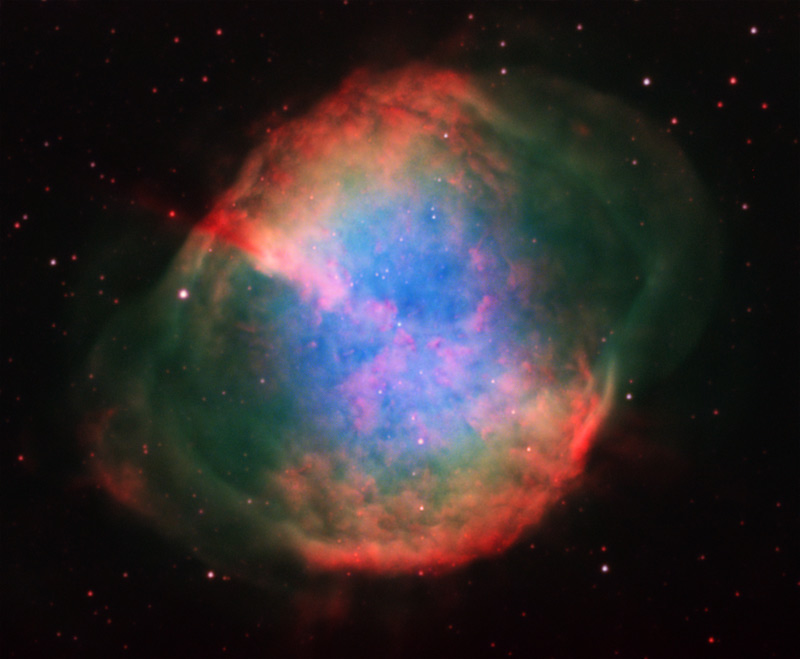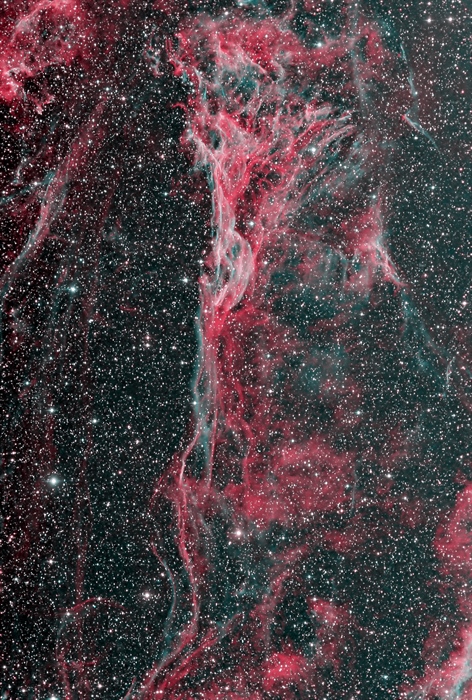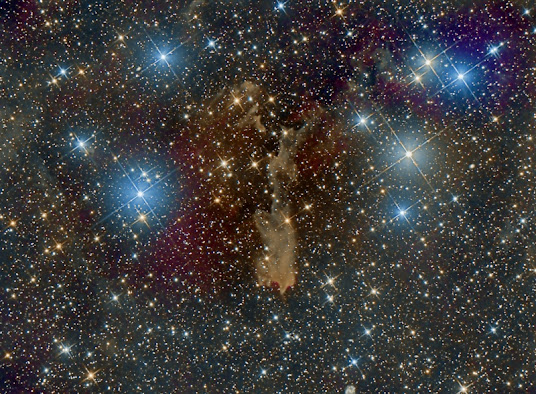The Orion Nebula in Near Infrared
http://www.rolfolsenastrophotography.com
Copyright: Rolf Wahl Olsen
Link to full size image (2.45MB)
This image shows the great Orion Nebula (Messier 42) in infrared light. Traditional images of the Orion Nebula taken in visible light primarily display the familiar and striking magenta colour from H-Alpha emission, as well as large dark obscuring clouds of dust. But infrared light penetrates these clouds better and allows for a peek deep into the heart of the nebula, revealing complex details and hundreds of bright young stars that are otherwise completely invisible.
These stars shine primarily in the infrared and appear as golden red in this image. Only a minority of these are even visible in traditional images.
The infrared region seems largely unexplored by amateur astronomers. But using a filter that only allows infrared light (>700nm) to pass through allows obtaining an image of these hidden features. Effectively the band observed is 700-1100nm since the sillicon CCD chip is not responsive to wavelengths longer than that, and this band is called NIR (Near Infrared).
One issue arising from this technique is that the NIR band does not have a colour as such, since it lies outside the visible light spectrum. So I thought for a while about how to best produce a colour image that whould emphasize the NIR data. I decided to substitute the R channel with NIR which nicely brings out the contrast between the nebula itself and all the young obscured stars that shine primarily in infrared.
I used a NIR filter together with G and B filters to create this colour composite. The resulting images were assigned to the different channels as NIR->Luminance, NIR->Red, G->Green and B->Blue.
The CCD sensor (KAF-8300) is no where near as sensitive in the NIR band as it is in visible light so I gathered a lot longer exposure time in NIR than in G an B. Still, the Orion Nebula is so bright that overall integration time was just 1 hour and 21 minutes.
The Orion Nebula lies 1350 light-years away in the constellation Orion and is the closest stellar factory to us. Here new stars are born out of the dense clouds of gas and dust. The nebula is lit up by the four bright young stars in the centre called the Trapezium. These stars form a small cluster and many more are in fact present, as can be seen in this infrared view.
Image details:
Date: 24th and 27th November 2012
Exposure: NIR(Luminance) 72m, NIR(red) 72m, G(green) 4.5m, B(blue) 4.5m, total 1hr 21mins @ -30C
Telescope: 10" Serrurier Truss Newtonian f/5
Camera: QSI 683wsg with Lodestar guider
Filters: Astrodon LRGB E-Series Gen 2
Taken from my observatory in Auckland, New Zealand





